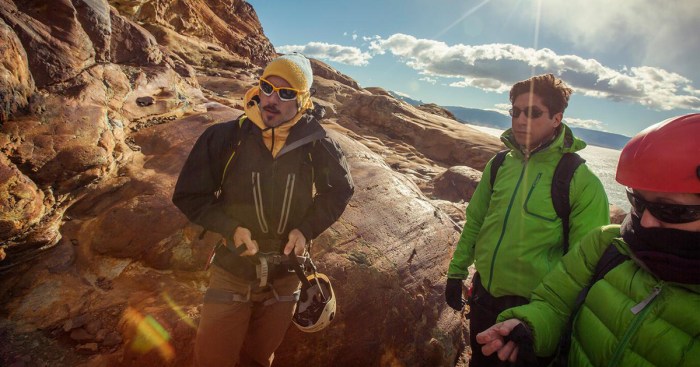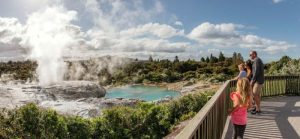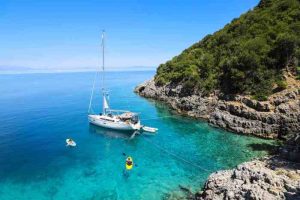
Embark on a journey to discover the world’s most exhilarating hiking and trekking adventures. From challenging mountain ascents to serene coastal trails, this exploration unveils diverse experiences catering to every adventurer’s spirit. We delve into planning, preparation, and essential gear, ensuring a safe and rewarding journey. Discover unique destinations blending hiking with other adventure sports, niche interests, and cultural immersion.
This comprehensive guide navigates the spectrum of hiking and trekking, offering insights into popular destinations, detailed itineraries, and crucial safety considerations. Whether you’re a seasoned trekker or a novice hiker, this resource empowers you to plan unforgettable adventures, blending physical challenges with enriching cultural experiences and breathtaking natural beauty.
Defining “Best Hiking and Trekking Adventures”

Defining the “best” hiking and trekking adventure is inherently subjective, depending heavily on individual preferences and priorities. However, several key factors contribute to a truly exceptional experience. These include the level of difficulty, the quality of the scenery, the accessibility of the trail, and the unique cultural or natural experiences offered. A “best” adventure is one that successfully balances these elements to create a memorable and rewarding journey, tailored to the capabilities and desires of the participant.Defining a “best” hiking or trekking experience requires considering a multitude of factors beyond just the physical challenge.
The ideal adventure will provide a harmonious blend of physical exertion, breathtaking vistas, manageable logistics, and opportunities for immersion in the local culture and environment. A challenging climb to a remote mountain peak, for example, might be considered “best” for an experienced mountaineer, while a leisurely walk through a scenic national park might be perfect for a family with young children.
The definition, therefore, is inherently flexible and personalized.
Diverse Hiking and Trekking Experiences Globally
Hiking and trekking experiences are incredibly diverse, spanning a vast range of terrains, climates, and cultural contexts. These adventures can be categorized based on several key factors. Terrain variations include everything from gentle, well-maintained trails through forests to steep, rocky ascents of high-altitude mountains. Climatic conditions range from tropical rainforests to arctic tundra, influencing both the physical challenges and the necessary equipment.
Furthermore, the cultural context of a trek can be equally significant, with opportunities to interact with local communities, witness unique traditions, and gain a deeper understanding of different cultures.
Comparative Table of Hiking and Trekking Destinations
The following table provides a comparative overview of various hiking and trekking destinations, highlighting their difficulty, estimated cost, and unique features. These are estimates and can vary based on travel style, season, and individual choices.
| Location | Difficulty | Estimated Cost (USD per person) | Unique Features |
|---|---|---|---|
| Inca Trail to Machu Picchu, Peru | Moderate to Strenuous | $1000 – $2500 | Historic Inca ruins, high-altitude trekking, diverse ecosystems |
| Tour du Mont Blanc, France, Italy, Switzerland | Strenuous | $1500 – $3000 | Stunning alpine scenery, challenging terrain, multi-country experience |
| John Muir Trail, California, USA | Strenuous | $500 – $1500 | High Sierra wilderness, spectacular views, challenging terrain |
| Everest Base Camp Trek, Nepal | Moderate to Strenuous | $1200 – $3000 | Stunning Himalayan views, Sherpa culture, high-altitude acclimatization |
| Great Ocean Walk, Australia | Easy to Moderate | $500 – $1000 | Coastal scenery, diverse wildlife, varied terrain |
Popular Hiking and Trekking Destinations
Choosing the perfect hiking or trekking adventure depends greatly on personal preferences, but some destinations consistently rank highly due to their stunning scenery, diverse ecosystems, and rich cultural heritage. These locations offer a blend of physical challenge and rewarding experiences, making them unforgettable for adventurers of all skill levels.
Globally renowned destinations offer a wide range of experiences, from challenging high-altitude treks to gentler walks through picturesque landscapes. The best choice will depend on your fitness level, desired level of difficulty, and preferred type of scenery.
Examples of Globally Renowned Hiking and Trekking Destinations
Several locations worldwide stand out for their exceptional hiking and trekking opportunities. These destinations offer diverse experiences, catering to various preferences and skill levels. For instance, the Inca Trail to Machu Picchu in Peru provides a historically rich and challenging trek, while the Tour du Mont Blanc in the Alps offers breathtaking alpine scenery and a moderate to challenging experience.
The Appalachian Trail in the eastern United States provides a long-distance hiking option, while the John Muir Trail in California offers stunning views of the Sierra Nevada mountains. Each location presents unique challenges and rewards.
Top 10 Hiking and Trekking Destinations
This list considers factors such as scenery, biodiversity, cultural significance, and accessibility. The ranking is subjective and reflects a balance of popularity and unique qualities.
- Inca Trail to Machu Picchu, Peru
- Tour du Mont Blanc, France, Italy, Switzerland
- Appalachian Trail, United States
- John Muir Trail, United States
- Everest Base Camp Trek, Nepal
- Torres del Paine, Chile
- Kilimanjaro, Tanzania
- Annapurna Circuit Trek, Nepal
- Haute Route, France and Switzerland
- West Highland Way, Scotland
Descriptive Narratives of Top 5 Destinations
The following narratives aim to evoke the immersive experience a traveler might encounter in these five exceptional locations.
Inca Trail to Machu Picchu, Peru: Imagine winding through cloud forests, passing ancient Inca ruins, and finally reaching the breathtaking citadel of Machu Picchu, a lost city perched high in the Andes. The journey itself is a testament to Inca engineering, with meticulously crafted stone steps and breathtaking vistas at every turn. The air is crisp, the sounds of nature envelop you, and a sense of history permeates every step.
Tour du Mont Blanc, France, Italy, Switzerland: Picture yourself traversing high alpine passes, surrounded by the majestic peaks of Mont Blanc. Each day unveils stunning panoramas of glaciers, emerald valleys, and charming alpine villages. The trail itself is well-maintained, offering a challenging yet rewarding experience for hikers of moderate fitness. The cultural diversity of the region adds another layer to the experience, with each country offering its own unique culinary and cultural delights.
Appalachian Trail, United States: Envision months spent traversing the diverse landscapes of the eastern United States, from lush forests to rocky peaks. The Appalachian Trail is a journey of endurance and self-discovery, offering solitude and a deep connection with nature. The changing seasons paint the landscape in vibrant colors, and the trail’s many shelters provide a sense of community among fellow hikers.
John Muir Trail, United States: Imagine hiking through the granite peaks and high alpine meadows of the Sierra Nevada, with views of towering granite cliffs and pristine lakes. This trail is a challenge, requiring significant physical preparation, but the rewards are unparalleled. The stunning scenery, the challenge of the terrain, and the sense of accomplishment at the end make this a truly unforgettable experience.
Everest Base Camp Trek, Nepal: Picture yourself trekking through Sherpa villages, surrounded by the towering peaks of the Himalayas. The air thins with altitude, and the landscape becomes increasingly dramatic. The journey culminates in the awe-inspiring sight of Everest Base Camp, surrounded by the world’s highest mountains. The cultural immersion, the physical challenge, and the breathtaking scenery combine to create a truly unforgettable adventure.
Planning and Preparation for Hiking and Trekking Adventures

Embarking on a hiking or trekking adventure requires meticulous planning and preparation to ensure a safe and enjoyable experience. Thorough preparation minimizes risks and maximizes the chances of a successful and memorable trip, regardless of the difficulty level. Overlooking even seemingly minor details can lead to significant problems, so careful attention to all aspects is crucial.
Successful trip planning involves several key steps, from creating a detailed itinerary to selecting appropriate gear and implementing safety measures. A well-structured plan considers various factors, such as the chosen destination, the duration of the trip, the expected weather conditions, and the physical fitness levels of the participants. Adequate preparation reduces stress and allows for a more immersive experience, focusing on enjoying the natural beauty and challenges of the journey.
Itinerary Creation
A well-defined itinerary is the backbone of a successful hiking or trekking trip. It should include daily travel plans, outlining distances to be covered, anticipated elevation changes, points of interest, and potential campsites or lodging arrangements. The itinerary must also account for contingencies, such as unexpected weather changes or trail closures. A realistic timeline, considering factors like rest stops and potential delays, is essential to avoid exhaustion and ensure safety.
For example, a multi-day trek in the Himalayas might include specific daily targets, considering altitude gain and potential acclimatization needs, with built-in buffer days for unforeseen circumstances.
Gear Selection
Choosing the right gear is paramount for comfort and safety. The selection depends heavily on the specific conditions of the trek – climate, terrain, and duration. Packing too much can be as problematic as packing too little. A well-organized packing list, categorized by function and importance, is essential.
Below is a checklist of essential gear, categorized for clarity. Remember to check weather forecasts and adjust accordingly.
- Navigation: Map, compass, GPS device (with extra batteries)
- Sun protection: Sunscreen, sunglasses, hat
- Insulation: Layers of clothing suitable for expected temperature variations (base layers, fleece, waterproof jacket)
- Illumination: Headlamp or flashlight (with extra batteries)
- First-aid supplies: Comprehensive kit including blister treatment, pain relievers, antiseptic wipes, bandages
- Fire: Waterproof matches or lighter, fire starter
- Repair kit and tools: Knife or multi-tool, duct tape, cordage
- Nutrition: High-energy snacks (trail mix, energy bars), sufficient water or water purification system
- Emergency shelter: Emergency blanket, lightweight tent (depending on the trip)
- Hydration: Water bottles or hydration reservoir
- Footwear: Sturdy, well-broken-in hiking boots or trail runners, appropriate socks
- Backpack: Backpack of appropriate size and comfort, with rain cover
Safety Precautions
Safety should be the top priority throughout the planning and execution of any hiking or trekking adventure. This involves thorough research of the chosen trail, informing someone of your itinerary and expected return time, and carrying appropriate safety equipment. Awareness of potential hazards, such as wildlife encounters, weather changes, and trail conditions, is crucial. Understanding basic first aid and wilderness survival skills can significantly enhance safety.
For instance, carrying a satellite messenger or personal locator beacon (PLB) can be life-saving in remote areas with limited cell service.
Physical Fitness and Acclimatization
Physical fitness and acclimatization are critical, especially for challenging hikes and treks. Prior physical conditioning builds endurance and reduces the risk of injuries. A training regimen that includes cardiovascular exercise, strength training, and hiking practice is recommended. Acclimatization to altitude is crucial for high-altitude treks, involving gradual ascent and allowing sufficient time for the body to adjust to reduced oxygen levels.
Ignoring acclimatization can lead to altitude sickness, a serious condition that can be life-threatening. For example, a trek to Everest Base Camp requires a phased approach, allowing several days at increasing altitudes before reaching the final destination.
Adventure Sports Travel, Related Activities, and Destinations
Hiking and trekking, while rewarding in themselves, often serve as excellent complements to other adventure sports, creating a more diverse and exhilarating travel experience. The combination of these activities allows for a deeper exploration of a region’s natural beauty and challenges individuals physically and mentally in unique ways. This section explores the synergistic relationship between hiking/trekking and other adventure sports, highlighting destinations that offer such combined experiences and comparing different adventure travel packages.Hiking and trekking naturally lend themselves to integration with other adventure pursuits.
The access provided by trails often leads directly to opportunities for rock climbing, kayaking, or mountain biking. For example, a challenging trek might culminate in a breathtaking viewpoint perfect for rock climbing, or a river valley accessible only by foot might offer excellent kayaking opportunities. The endurance and navigational skills developed during hiking and trekking are also directly transferable to other adventure sports, enhancing a traveler’s overall experience.
Destinations Offering Combined Adventure Activities
Many locations worldwide offer a unique blend of hiking, trekking, and other adventure sports. These destinations cater to a wide range of experience levels, offering something for everyone from novice adventurers to seasoned professionals.
Nepal: The Himalayas offer world-class trekking opportunities, with numerous trails leading to base camps of iconic peaks like Everest and Annapurna. Many of these treks incorporate elements of rock climbing and potentially even ice climbing at higher altitudes. The region also boasts opportunities for white-water rafting and kayaking on the numerous rivers flowing down from the mountains.
Imagine the thrill of trekking through lush rhododendron forests, followed by the adrenaline rush of navigating Class IV rapids on a glacial river.
Patagonia (Chile/Argentina): This region is renowned for its stunning landscapes, featuring towering granite peaks, glacial lakes, and vast pampas. Hiking and trekking through Patagonia’s national parks offer breathtaking views and opportunities to witness incredible wildlife. The region also offers excellent opportunities for kayaking amidst icebergs and glaciers, rock climbing on challenging granite faces, and horseback riding across the expansive plains.
Banff National Park (Canada): This picturesque Canadian park provides diverse terrain perfect for hiking and trekking. Numerous trails wind through alpine meadows and forests, leading to stunning mountain vistas. The park also offers opportunities for mountain biking on extensive trail networks, rock climbing on challenging cliffs, and white-water rafting on the Bow and Kicking Horse rivers. The crisp mountain air and abundant wildlife make for an unforgettable experience.
Comparison of Adventure Sports Travel Packages
Adventure travel packages vary considerably in their inclusions and pricing. The following table compares three hypothetical packages, highlighting the differences in activities offered and overall cost.
| Package Name | Activities Included | Duration | Price (USD) |
|---|---|---|---|
| Himalayan Explorer | 7-day trek to Everest Base Camp, 2 days of rock climbing instruction and guided climbs, 1 day of white-water rafting | 10 days | $3500 |
| Patagonian Adventure | 5-day trek in Torres del Paine National Park, 3 days of sea kayaking amongst glaciers, 2 days of horseback riding | 10 days | $4000 |
| Banff Mountain Escape | 3-day hiking/trekking in Banff National Park, 2 days of mountain biking, 1 day of rock climbing, 1 day of canyoning | 7 days | $2800 |
Exploring Niche Travel Interests
Beyond the typical hiking and trekking adventures, a world of specialized travel experiences awaits those seeking unique and enriching journeys. These niche interests often blend the physical challenge of trekking with the intellectual stimulation of discovery and the personal fulfillment of pursuing a specific passion. This section explores several such niche travel options, highlighting their unique appeal and the preparations involved.
Birdwatching Tours Integrated with Hiking and Trekking
Birdwatching tours offer a fascinating blend of physical activity and wildlife observation. Hiking and trekking become integral parts of accessing remote habitats and observing birds in their natural environment. Ideal locations include the Amazon rainforest (during the dry season for better visibility), Costa Rica (renowned for its biodiversity year-round), and the Himalayas (during spring and autumn for migratory birds).
Preparation involves researching the local avifauna, packing appropriate binoculars and field guides, and learning about responsible birdwatching practices to minimize disturbance.
Arctic and Polar Expeditions: Challenges and Preparations
Arctic and polar expeditions present unique challenges demanding rigorous preparation. These treks often involve navigating challenging terrain, extreme weather conditions, and potential encounters with wildlife. Essential preparations include specialized cold-weather gear (layers of insulating clothing, waterproof outerwear, sturdy boots), experience in winter camping and survival techniques, and potentially, guided tours from experienced polar expedition operators. The trekking aspect is crucial for accessing remote glaciers, ice caps, and research stations.
Navigational skills, ice axe and crampon proficiency, and understanding of potential risks like crevasses and whiteouts are paramount.
Golfing Vacations and Scenic Hiking Trails
Many upscale golf resorts are located in areas with stunning natural scenery and readily accessible hiking trails. This offers a unique opportunity to combine the relaxation of golf with the invigorating challenge of hiking. Examples include the Scottish Highlands (offering challenging courses and breathtaking mountainous terrain), the coastal courses of Ireland (with cliff walks and coastal trails), and the mountainous resorts of the Alps (providing access to alpine hiking trails).
Planning involves choosing resorts that offer both high-quality golfing facilities and nearby hiking options.
Hiking and Trekking Integrated into Sailing and Yachting Vacations
Sailing and yachting vacations provide a unique perspective on coastal exploration. Hiking and trekking become extensions of this experience, allowing access to secluded coves, beaches, and coastal trails inaccessible by boat. Locations such as the Greek Islands (with their numerous hiking paths), the Croatian coastline (offering dramatic cliff walks), and the fjords of Norway (providing access to stunning landscapes) are ideal.
Preparation involves packing appropriate hiking gear for embarking and disembarking from boats, understanding the tide times, and being aware of potential sea conditions.
Jungle and Rainforest Exploration with Trekking
Jungle and rainforest trekking offers an immersive experience into incredibly biodiverse ecosystems. The unique flora and fauna encountered vary widely depending on location, with examples including the Amazon rainforest (home to an incredible array of animals and plants), the rainforests of Borneo (renowned for orangutans and diverse flora), and the Congo Basin (featuring unique primate species). Preparation involves employing a local guide experienced in navigating the terrain and identifying the local wildlife, packing appropriate insect repellent and protective clothing, and respecting the environment.
Wellness Activities Integrated into Hiking and Trekking
Integrating wellness activities enhances the restorative benefits of hiking and trekking. Mindful practices like meditation, yoga, and breathwork can be incorporated into the journey, promoting relaxation and stress reduction. Locations with serene natural settings, such as national parks, mountain retreats, or coastal trails, are ideal for these activities. Preparation involves choosing a location that offers opportunities for quiet reflection and incorporating mindful practices into the daily routine.
Geological Destinations for Hikers and Trekkers
Geological destinations offer a unique blend of scenic beauty and educational opportunities. Hikers and trekkers can explore dramatic landscapes shaped by geological processes, learning about rock formations, volcanic activity, and geological history. Examples include the Grand Canyon (exhibiting layers of rock spanning millions of years), Iceland (with its active volcanoes and glaciers), and the Dolomites (featuring stunning rock formations).
Preparation involves researching the geological features of the area, bringing appropriate maps and guides, and potentially joining guided tours led by geologists.
Music and Performing Arts Travel Complementing Hiking and Trekking
Combining hiking and trekking with music and performing arts festivals or cultural events creates enriching experiences. Imagine hiking through a scenic landscape followed by attending an open-air concert or visiting historical sites with significant musical or theatrical connections. Examples include music festivals in the Scottish Highlands, attending performances in historic mountain villages in the Alps, or combining trekking with visits to cultural sites in Nepal.
Preparation involves researching events and planning the itinerary to integrate both aspects of the trip.
Educational Tours Incorporating Hiking and Trekking
Educational tours can significantly benefit from incorporating hiking and trekking into the curriculum. Hands-on learning in natural environments provides a deeper understanding of ecological processes, geology, and local cultures. Examples include field trips to national parks for ecology students, geological surveys in mountainous regions, or cultural immersion programs incorporating local hiking trails. Preparation involves developing a curriculum that integrates hiking and trekking with the educational objectives, ensuring safety, and securing necessary permits and permissions.
Ultimate Conclusion
Ultimately, the best hiking and trekking adventures are those that resonate personally. Whether you seek adrenaline-pumping challenges or tranquil escapes into nature, careful planning and preparation are key to a successful and memorable journey. Embrace the diverse opportunities available globally, and discover the unique blend of physical exertion, cultural immersion, and breathtaking scenery that defines the ultimate hiking and trekking experience.
The world awaits your exploration!
Quick FAQs
What is the best time of year to go hiking/trekking?
The ideal time depends on the location and climate. Research the specific region’s weather patterns to avoid extreme temperatures or monsoon seasons.
How do I choose the right hiking boots?
Consider the terrain, climate, and duration of your hike. Visit a specialty outdoor store for professional fitting and advice.
What should I do if I get lost?
Stay calm, stay put if possible, and try to signal for help. Always inform someone of your hiking plans and expected return time.
What are some common hiking injuries and how can I prevent them?
Blisters, sprains, and muscle strains are common. Proper footwear, stretching, and gradual acclimatization help prevent injuries.





